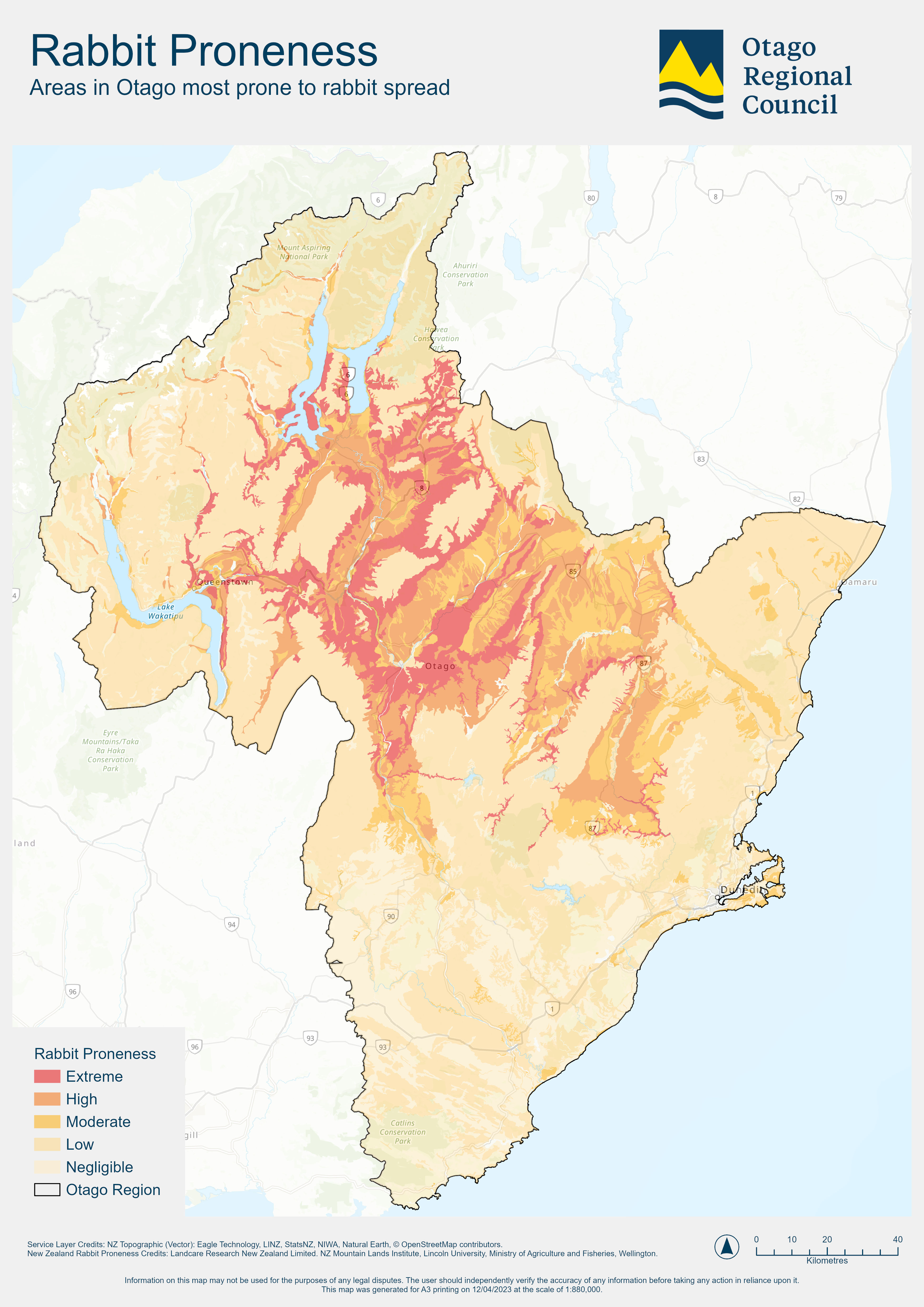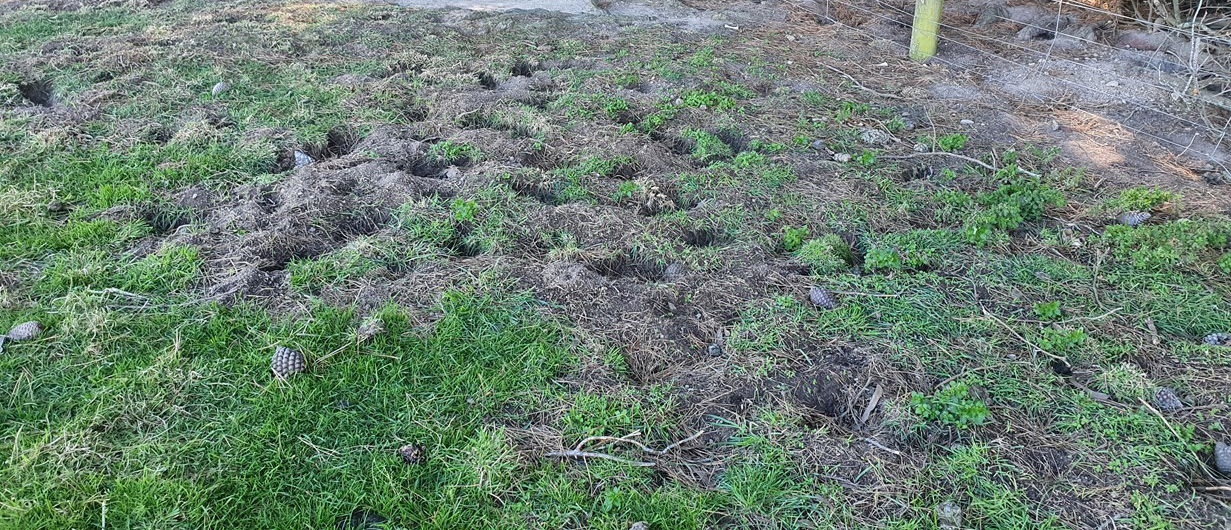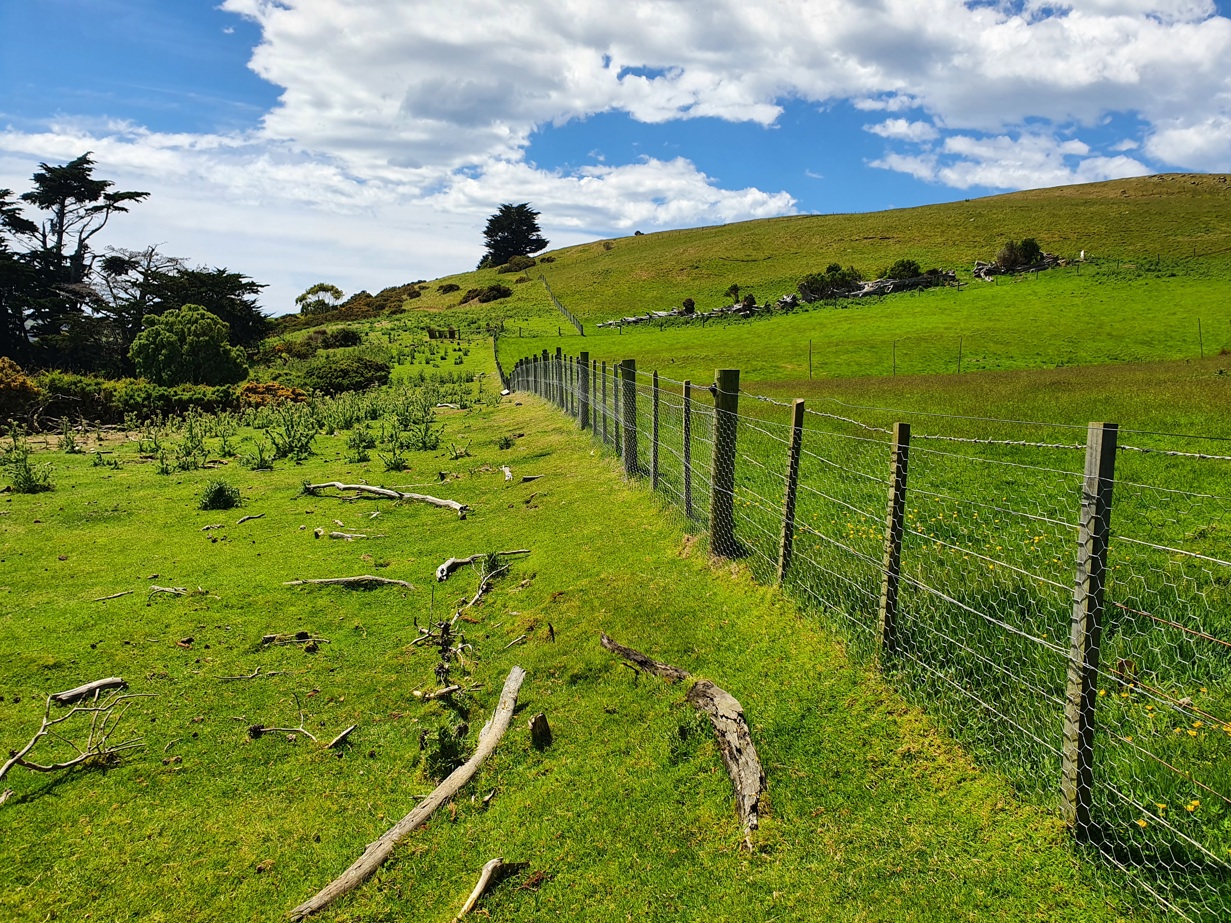While it remains the land occupiers’ responsibility to control rabbit populations – from high country stations and farms to lifestyle block owners and outlying residential suburbs – ORC is ramping up its community programmes to assist groups and individuals with monitoring and education and targeting assistance for smaller property owners.
In the year to January 2023, there were 332 inspections of Otago properties carried out by ORC staff for the community rabbit programme, with 209 non-compliant properties receiving follow-up visits.
Solid rabbit control progress is being made in most Otago high country areas, but the spread of subdivisions and creation of peri-urban areas (those transitioning from rural to urban development) around Central Otago remains problematic.
Densities of up to 16 rabbits per square kilometre have been logged in some places during ORC night-count monitoring. Rabbits have an impact on pasture and crops with just 10 rabbits devouring the equivalent of what one sheep requires.
ORC’s Manager Environmental Implementation, Libby Caldwell, says ORC’s rabbit programme is a shared responsibility for the whole of ORC’s biosecurity team.
“We’ve increased the staff resource in the wider team which includes dedicating two staff positions to managing the community-led rabbit programmes,” Mrs Caldwell says.

ORC considers European rabbits (Oryctolagus cuniculus) one of Otago’s worst pests. The rabbits were imported and released in coastal Southland in the 1860s as a game, food and fur source, and by the 1890s were established throughout Southland and Otago but were at that time overrunning the Mackenzie country as they invaded Canterbury.
This month, rabbits are officially ORC’s Pest of the Month.
“Our team is connecting nationally and internationally to share resources and to take learnings which we can adopt here to enhance our rabbit programme,” Mrs Caldwell says.
Two reports reviewing rabbit monitoring
During 2022 ORC commissioned two reports to review current rabbit monitoring methodologies and tools, with recommendations to Council to further develop the programme and improve monitoring.
“ORCs entire biosecurity team work in the rabbit space, including two Community Co-ordinators who facilitate the community programmes,” Mrs Caldwell says.
In addition, ORC’s Environmental Implementation team’s Principal Advisor, Performance and Delivery Specialist, Biosecurity Specialist, and Compliance Support Coordinator all have roles in the rabbit programmes too.
“We have equipment to undertake thermal imaging, night count monitoring, fly trap monitoring, and we can undertake research and trials where applicable,” Mrs Caldwell says.

The Rabbit Action Plan
The new initiatives for the Rabbit Action Plan, following the two 2022 external reports, revolves around increased rural monitoring, including increased visits and night counts, monitoring for smaller properties, thermal imagery, community surveys and engagement and studying the impacts of Climate Change.
“The Action Plan addresses the need for ORC to assess the feasibility of using various monitoring methods effectively on smaller properties, when historically monitoring was developed and targeted to larger rural properties,” she says.
A “wicked problem” for Central Otago
Mrs Caldwell describes Central Otago’s rabbit situation as “a wicked problem”.
“We know there’s areas in Central Otago with very high rabbit populations, so we’re working with these communities to get a reduction in numbers,” she says.
ORC’s long-term target is “sustained control” of rabbit populations.
“There’s no quick fix here, but rabbit numbers can be reduced and maintained at manageable levels; likely with a minimal impact on the environment,” she says.
In 2021, ORC extended its rabbit programme into Otago’s peri-urban environments, by facilitating programmes in seven different areas across Otago.
From night-count monitoring carried out across Otago, the median density is 1 rabbit per square kilometre, however, densities of up to 16 rabbits per km were found, she emphasized.
“This is evidence that the rabbit problem is being exacerbated at some individual locations,” she says.

In February, Otago’s annual Great Easter Bunny Hunt was cancelled, in part because some farms had cleared their land using pest control contractors and poison, but also because of heightened fire risks and health and safety concerns. There were 12,000 rabbits shot last year.
Mrs Caldwell says while some of the larger commercial landholders are “very much on top” of their rabbit control, this gain is being countered where rabbits are not declining, such as in some new lifestyle blocks, subdivisions and other expanding peri-urban areas.
“For some landowners, particularly those on smaller holdings, rabbits are still very much a big challenge,” she says.
A strategic approach is often to use a “primary knock down poison”, followed up with secondary controls, such as shooting, fumigation and burrow destruction, alongside putting rabbit fencing in place.
“Our biosecurity officers will undertake inspections and provide suggestions for good practice rabbit management to land occupiers,” Mrs Caldwell says.
What can the peri urban landowners do?
A common complaint to ORC staff is that peri urban land occupiers are not allowed to shoot rabbits, nor can they use poison because of pets.
Mrs Caldwell says while rabbit control is the land occupier’s responsibility, ORC biosecurity staff are available to give advice.
Using contractors there are several options for landowners, such as fumigation, burrow destruction, and ferreting for low density areas, or using poisons while employing risk mitigations for pets.
“A key infrastructure for rabbit management is installing rabbit fencing; to reduce rabbit reinvasion and this will also help in the long-term management of rabbits on a property,” she says.

For the peri urban areas, ORC has been inspecting new areas to increase its coverage across the region to assist community-led programmes, she says.
The main concern raised by peri urban land occupiers is the need for people to co-ordinate rabbit management activities.
Mrs Caldwell says it is common that on smaller properties one person is attempting to manage the problem, but their neighbours aren’t, then their control efforts are short-lived and rabbits can re-invade.
On the high-country stations, farms and lifestyle block owners can contact ORC’s biosecurity staff to talk through the range of options to suit their property’s terrain, size and extent of rabbit infestation.
“ORC also responds to complaints received, based on information from affected communities,” she says.
Regulatory and non-regulatory methods
On the common question of “can we bring back the pest destruction boards?”, Mrs Caldwell says ORC prefers non-regulatory methods to support community-led solutions, through advocacy, education and collaboration, to
support landowners to have a proactive and sustainably long-term approach to rabbit control.
Through this work we have seen many individuals, government and local government organisations step up to meet their responsibilities around rabbits.
Mrs Caldwell says that there are many community groups who are “working really well together” to achieve long term management of rabbits and the “community champions” leading this work are extremely important in achieving the sustained control objective for rabbits.
There is a local group of Moeraki residents who have run workshops with a contractor around control methods and they have had numerous meetings to plan co-ordinated control.
In Wanaka around Black Peak Road, there is a group of residents who have come together to proactively manage rabbits and ORC is supporting them through the creation of rabbit management plans and running workshops to ensure the long-term management of rabbits, Mrs Caldwell says.
In Queensbury, there is also collaboration between neighbours for undertaking rabbit management, with a workshop held there to assist with the creation of rabbit management plans.
“This is a challenging area as there are many absentee owners as well as difficult topography. We’ve seen the community come together in this area to support each other with co-ordinated rabbit control operations and constructing shared rabbit fencing.”
The Otago Peninsula Biodiversity Group is also an example of a community group which has been very active in supporting their community to undertake strategic, co-ordinated long-term management of rabbits.
“They have run community meetings, workshops and provided information and resources to achieve this,” Mrs Caldwell says.
She says employing shooting as a first line of defence is seen as only a short-term option, with evidence that rabbit numbers rapidly increase again afterwards; then shooting has to be done on a continuous basis.
The regulatory method, such as issuing “requirement to act” notices, can be used to ensure land occupiers successfully undertaking rabbit management are not hindered by a neighbour’s inaction.
Use of Rabbit Haemorrhagic Disease Virus (RHDV)
RHDV was first introduced illegally in South Canterbury in 1997, and decimated booming rabbit populations at the time, with another Korean strain legally imported and released in early-2018.
However, residual RHDV at present is only detected in isolated pockets. RHDV can have a good initial knockdown impact on rabbit populations when immunity to the virus levels are low, but this is not an effective long-term management solution for rabbit populations.
Viral haemorrhagic disease virus of rabbits is on the Official New Zealand Pest Register as an unwanted organism. This register is maintained by Biosecurity New Zealand.
Mrs Caldwell says the Council is currently investigating if it is viable to remove RHDV from the unwanted organism list, which could pave the way for its reintroduction into areas where it may not be present in Otago, but not necessarily from new imports.
“We haven’t yet decided how we might utilise current strains within New Zealand at this point,” she says.
On the question of ORC bringing new strains of RHDV into New Zealand, Mrs Caldwell says the Council would rely on information provided from experts at Manaaki Whenua, advising on the most appropriate virus’ available for use in Otago.
“It’s envisaged that if RHDV was to be removed from the Unwanted Organism list this is likely to just be for the strains that are currently in New Zealand, not for new strains”.
“[However] If there are other new strains we would need to seek approval to import these to ensure there are no unforeseen negative impacts on other species or pets,” Mrs Caldwell says.
Compliance: ‘request for work letters’ issued
Mrs Caldwell says during the past eight months there have been five “request for work” letters issued to government organisations, including territorial local authorities, around Otago. They cannot be identified because they are still in the compliance process.
From July to end of last January, Mrs Caldwell says a total of 52 rural properties were inspected, with 12 of them being non-compliant.
“The non-compliant properties have been sent ‘request for work’ letters. Notices of direction will follow if they’re non-compliant on re-inspection,” she says.
Between February 2022 and January this year 184 rural properties were inspected, with 61 properties found to be non-compliant, then receiving directions to follow the rabbit control rules.
An additional 332 inspections were carried out for the community rabbit programme, with 209 non-compliant properties followed up, Mrs Caldwell says.
Annual ORC ECO Fund assists rabbit programmes.
Last year there were four recipients of the ORC’s ECO Fund rabbit incentive funding.
The Otago Peninsula Biodiversity Group received funding for community consultation for development of a landscape scale rabbit management plan and the Friends of Tuckers Beach Wildlife Management Reserve received funding for the development of a rabbit management plan, training, and fencing.
Both the Hidden Hills Residents Association and Wentworth Estate Residents Group received funding for collaborative community fencing.
The Incentives funding was open again this year with $150,000 available in the pool. Applications closed last week on 31 March, but interested groups can contact us for further information.
Criteria for the ECO Fund Rabbit incentive funding
Further information
Contact a ORC Biosecurity officer at pests@orc.govt.nz
